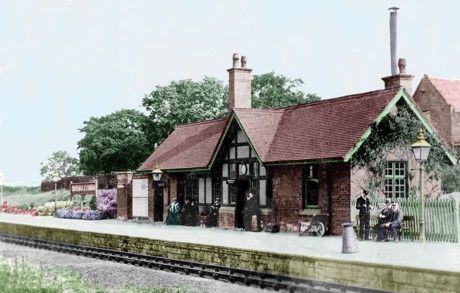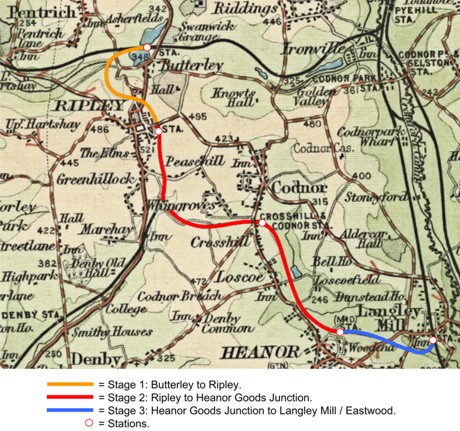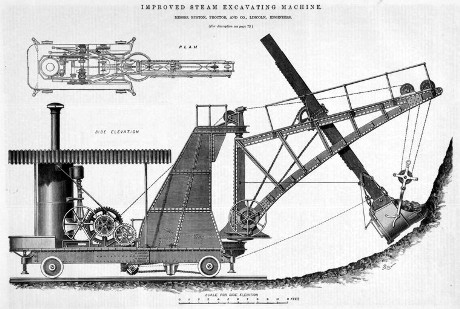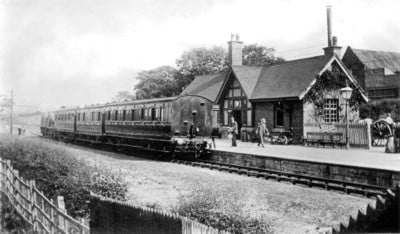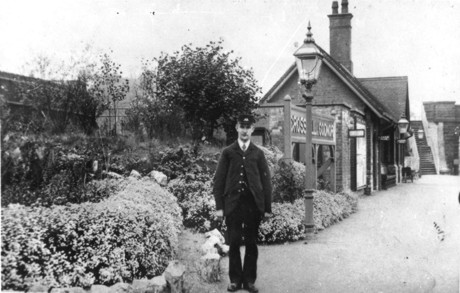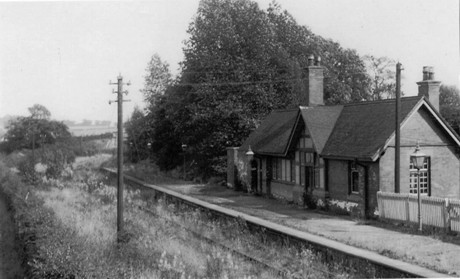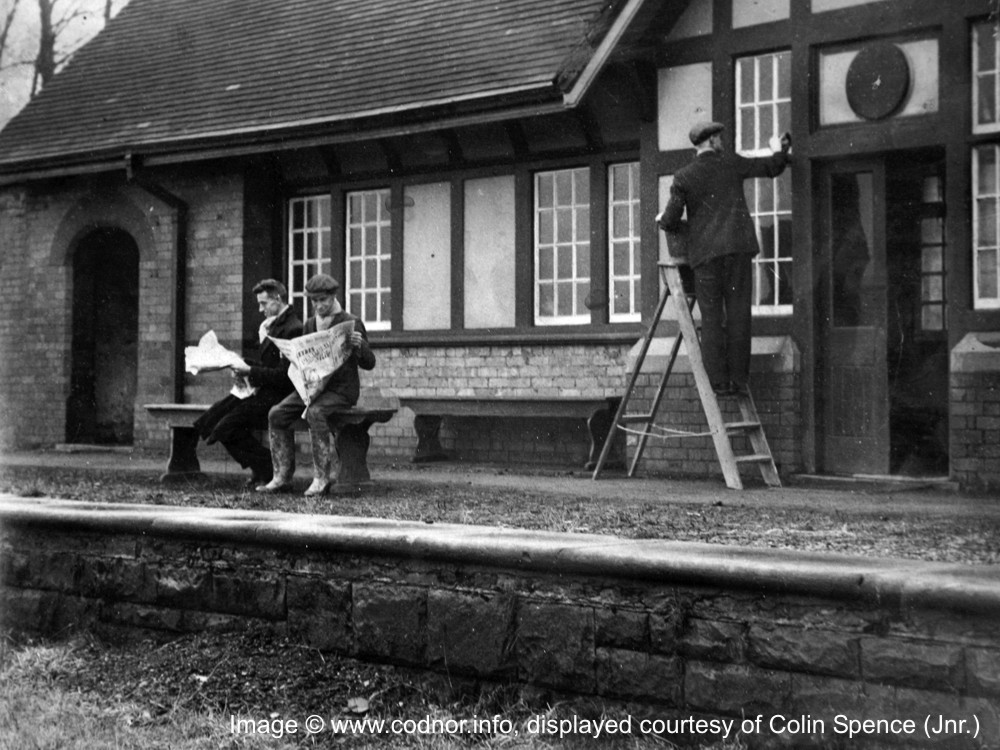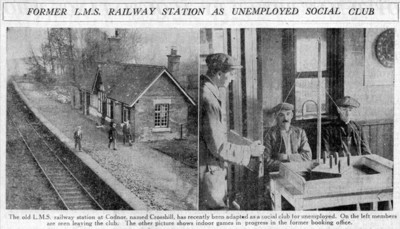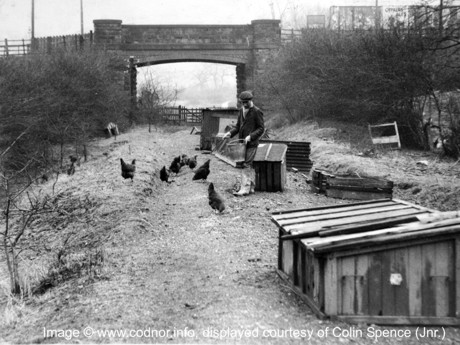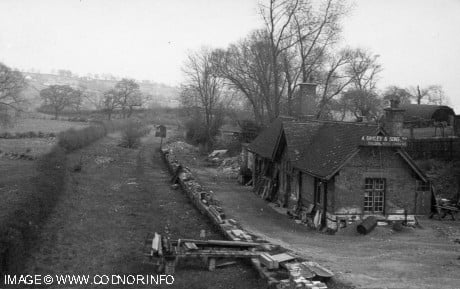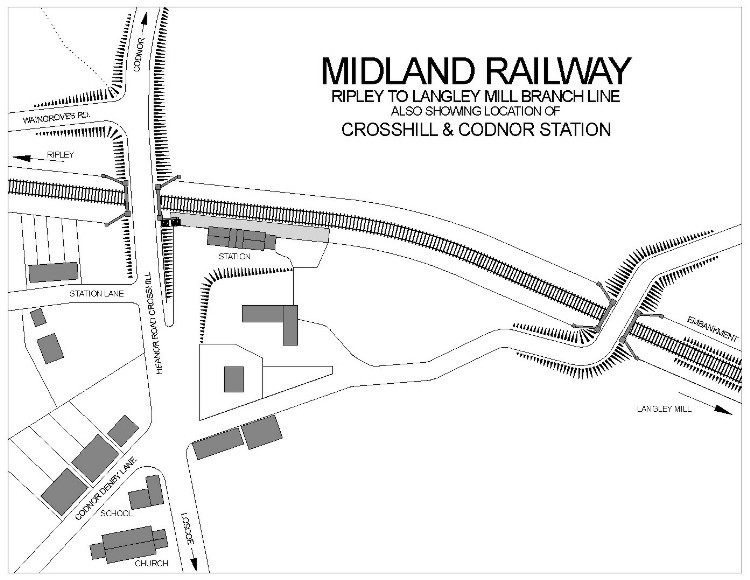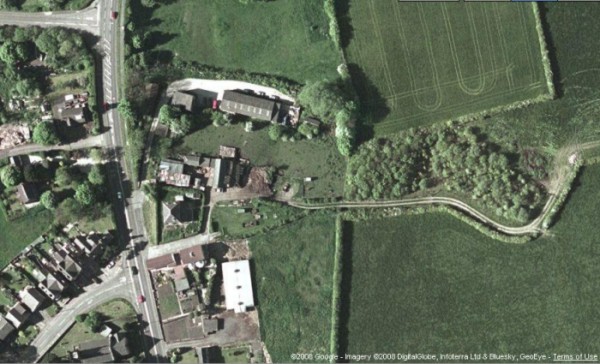
Crosshill & Codnor Station
Fig.1 A picturesque view of Crosshill & Codnor station dated around 1904
Crosshill and Codnor station was situated on the Midland Railway’s branch line, which ran between Butterley and Langley Mill.
Parliament granted permission for the first part of the line between Butterley and Ripley on the 3rd July 1884 the second phase between Ripley and Heanor Goods Junction was authorised on 25th June 1886.
Finally on 11th June 1891 an additional length of 39 chains was added to extend the track from Heanor Goods Junction to a platform south west of Langley Mill and Eastwood station.
Mr G Walters Station Master
Fig.4 A three coach train heading towards Langley Mill drops off a passenger at Crosshill & Codnor station 1904.
Fig.5 Mr Freeman stands beside the neatly kept platform gardens 1904. You can see the wooden steps leading up to the main road and also part of the bridge that carried the Heanor road over the line.
Photo displayed by kind permission of the wood Collection, http://www.picturethepast.org.uk/
The station closed temporarily in 1917 for three years as a wartime economy measure. The station reopened in 1920 but was never as busy as it was before the First World War. It eventually succumbed to road competition in the form of the Nottinghamshire & Derbyshire Tramways Company, who ran a Tram service between Nottingham and Ripley. The station was closed completely in 1926 and final authority was given for the removal of the permanent way, bridge structures and other works with the exception of the station buildings at Heanor and Crosshill & Codnor in January 1930.
The station building was used briefly as a social centre for the unemployed during the 1930's and later as a builders yard before finally being demolished in 1972.
Fig.6 The station soon after closure in 1929. the track is still in place
but the station is abandoned and overgrown.
Displayed courtesy of the Kidderminster Railway Museum
Fig.7 This picture shows the station building in the 1930s when it was used as a Social Centre for the unemployed. The people in the picture are, Joe Calladine on the Left and Colin Spence next to him. I dont know who's cleaning the windows. Photo displayed by kind permission of Colin Spence.
Fig.8 This newspaper image dated 24th November 1933 shows the station being used as an unemployed Social Club.
Fig.9 This picture shows Colin Spence feeding his chickens on the disused railway line in the early 1930s. The main road goes over the railway bridge and the station is on the other side. Note the advertising hoardings up on the road.
Photo displayed by kind permission of Colin Spence.
Fig.10 This picture dated 18th April 1954 shows the station some 30 years after it closed, now being used as a builders yard and looking very sorry for itself.
Fig.11 Location of station & route of railway line. CLICK TO ENLARGE
I have tried to illustrate in the above diagram how hundreds of tons of stone had to be used to raise the level of both Heanor Road and Waingroves Road sufficiently to cross over the new railway line. Also Pinchum lane was renamed Station lane when the new line opened
Fig.12 Aerial view of Crosshill taken about 2006 shows how all signs of the Railway line have completely disappeared. During the early 1980s both the railway embankment and the bridge carrying the farm track over the line still existed. However the Godkin opencast sight which covered some 500 acres of land between Codnor & Loscoe removed all signs of the Railways except a small section of the embankment that still survives behind loscoe dam. Also note the row of terraced cottages on station lane have been demolished and are just a pile of rubble.
The sight of the station is now used as storage by a local Salvage and reclaim business.
Further information about Crosshill & Codnor Station
Simon Swain has been interested in the history of the local railway networks for many years. His particular interest in the Butterley to Langley Mill branch was generated by looking at a picture postcard of Crosshill & Codnor station in a book. He was struck initially by the individuality of the station which then progressed into a curiosity as to where the branch which served the station started from and where it went to, and how it connected with the local railway network. From that point onward he began a comprehensive research into the line, its operational history, and its early demise.
To read Simon's comprehensive history of the line, please click HERE
Information for this page was obtained from the following sources.
Derby Daily Telegraph 07/04/1887
Derbyshire Times and Chesterfield Herald, 03/12/1887
Derby Mercury 04/06/1890
Ripley & Heanor News 31/08/1951
Derbyshire Railway Stations, by Brian Lund 1999
The Heritage of Codnor & Loscoe, by Fred S Thorpe 1990
Around Ripley, by Julie Potton & Janet North 1995
